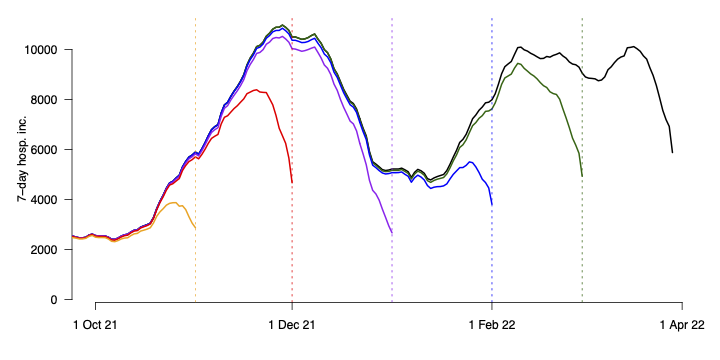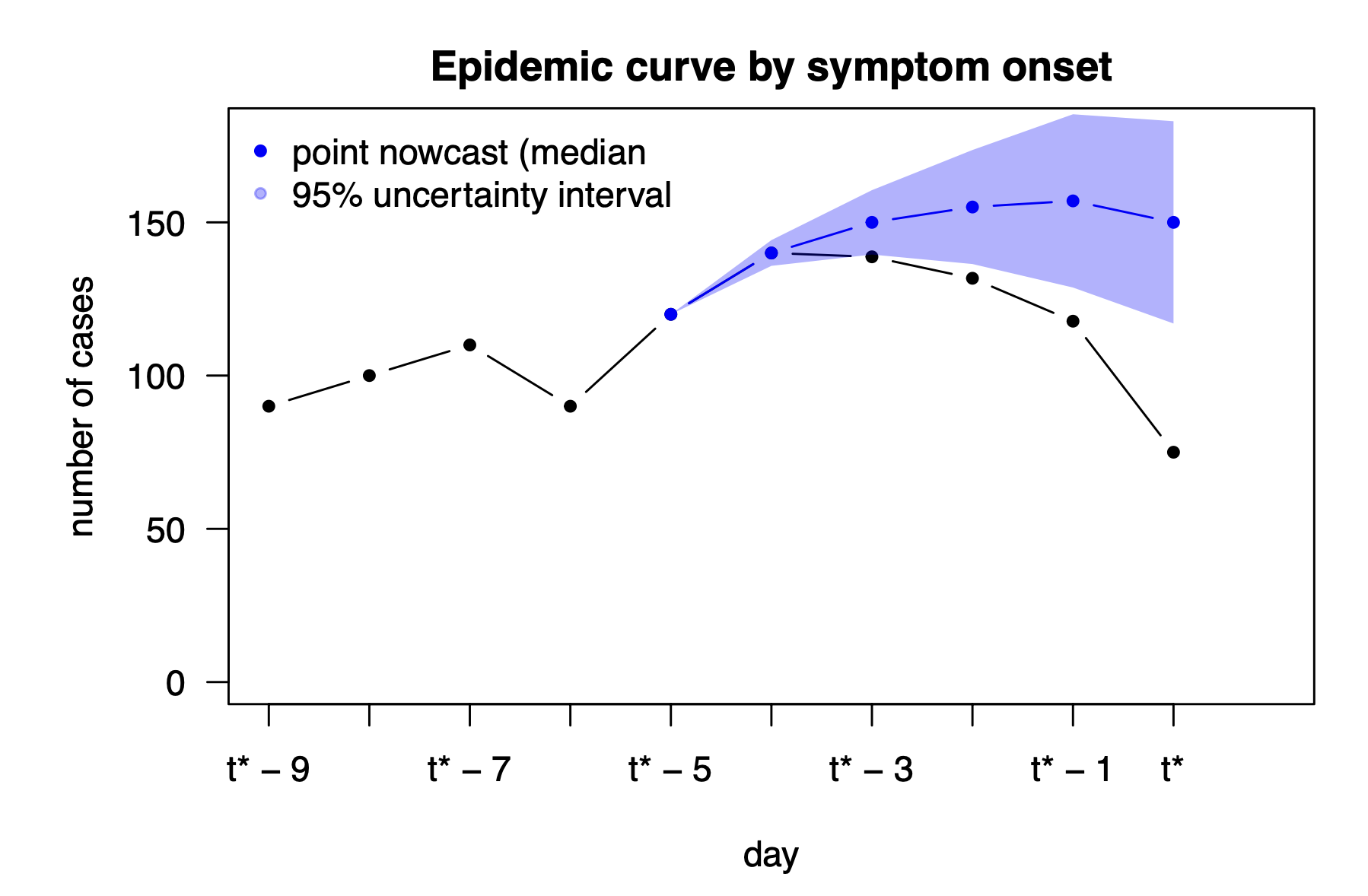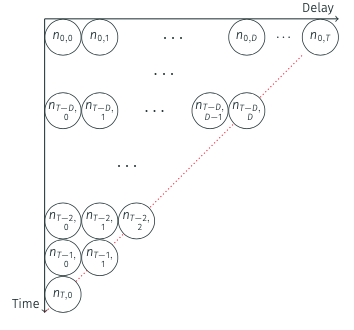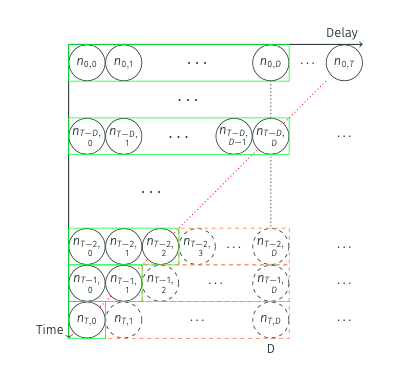Introduction to joint estimation of nowcasting and reporting delays
Motivating example
Often we see data like this

(all figures in this deck are courtesy of Johannes Bracher)
The aim of nowcasting
Predict what an epidemiological time series will look like after all delayed reports are in.

The limitations of simple nowcasting methods
- Hard to propagate uncertainty
- Doesn’t account for observation error in the primary events
- Not a generative model of the data reporting process (hard to add complex reporting patterns)
- If we get the delay wrong, we can get the nowcast wrong
Jointly estimating reporting delays and nowcasting
One potential solution is to jointly estimate the reporting delays and the nowcast. We can do this if we have multiple snapshots of the data.

The reporting triangle
The reporting triangle is the name given to the data structure that arises when we have multiple snapshots of the data.

The reporting triangle
Here the rows represent the time of the primary event, and the columns represent the time of the report. Some events are missing because they are yet to happen.

Completing the reporting triangle
The aim of nowcasting is to complete the reporting triangle. This means filling in the missing entries in the lower triangle and then summing the rows to get the nowcast.

Your Turn
- Simulate the reporting triangle
- Perform a joint estimation of the delay and nowcast
- Understand the limitations of the data generating process
- Perform a joint estimation of the delay, nowcast, and reproduction number
Introduction to joint estimation of nowcasting and reporting delays